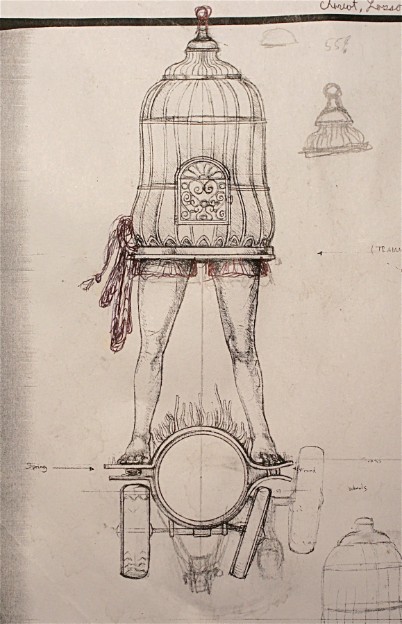
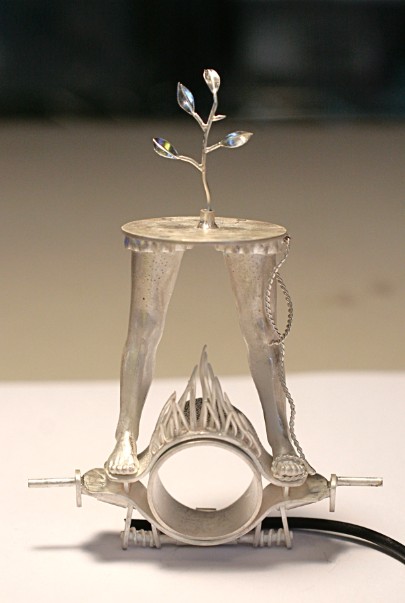
The legs of the form were created using purple wax and lost wax casting. The remainder of the piece was constructed using sheet, round wire, and bezel strip.
Tip: Use reverse soldering or cold connections to attach small parts to larger ones. Reverse soldering refers to drilling holes in sheet, placing wire through the whole, and soldering from the back side. The grass was created with this technique.
The cage is cold connected to the base using tube rivets.
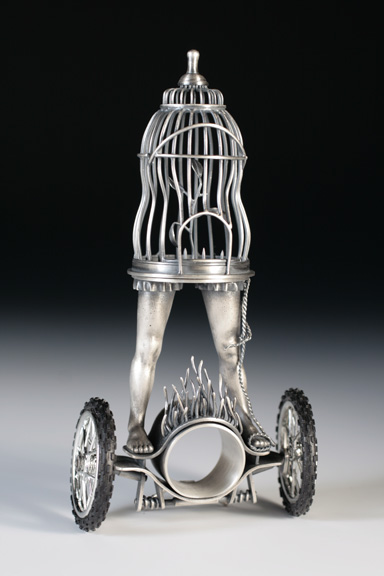
Training Wheels. Cast silver, fabricated silver, found objects, patina.
Below: Antique print used as a visual reference
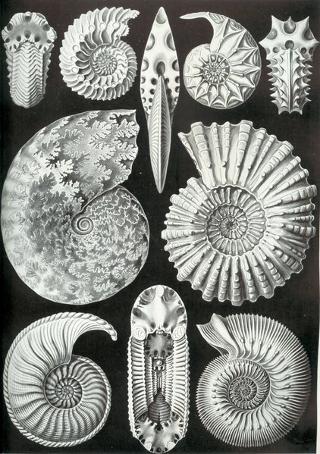
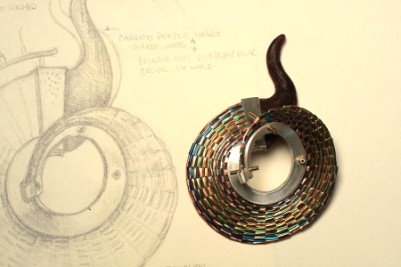
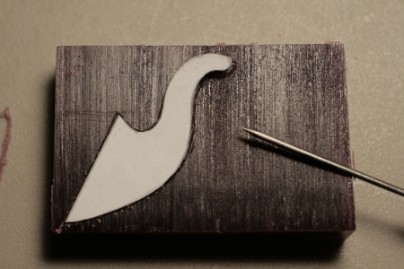
- Use a scribe and a pattern to transfer the shape to the wax.
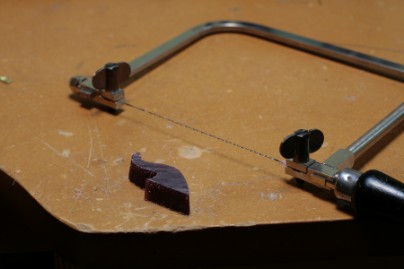
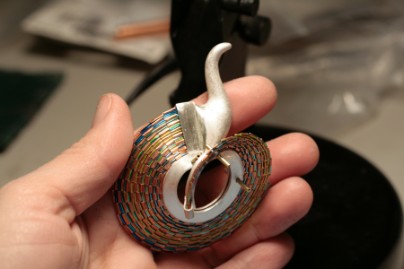
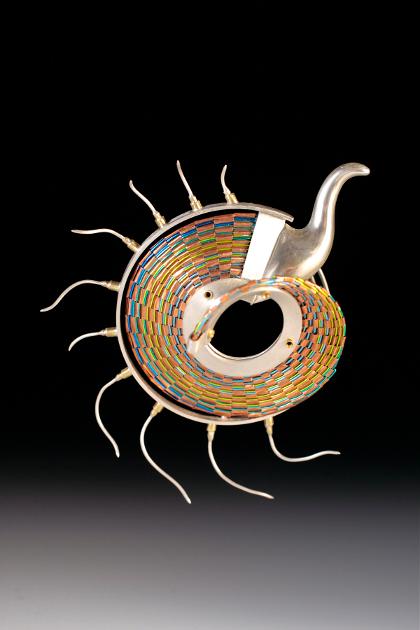
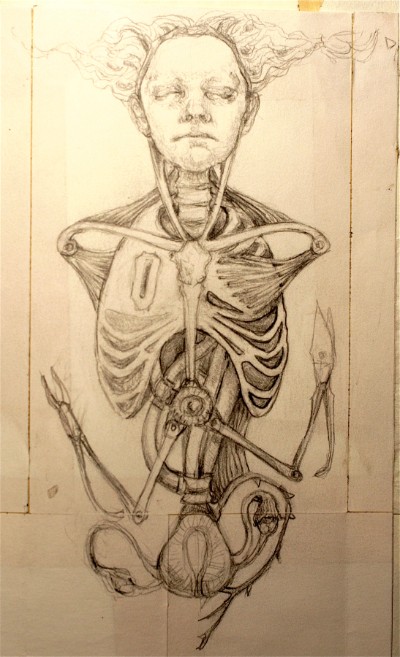
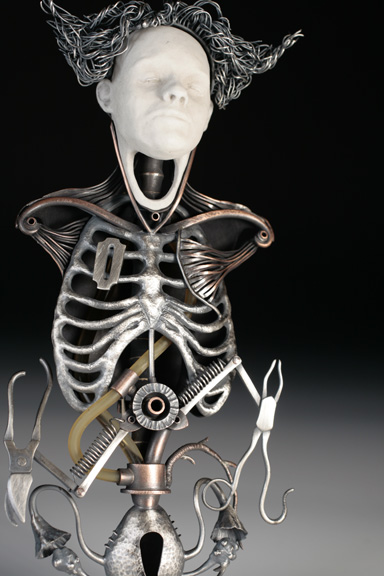
Laparoscopy II. Silver, copper, patina, cast plastic, rubber, springs
- Initial drawing of the ring and image of antique birdcage used as visual reference
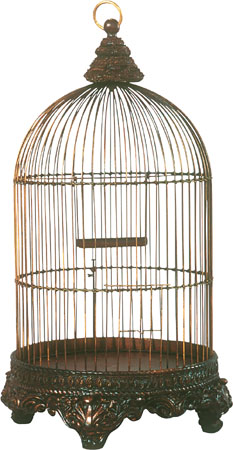
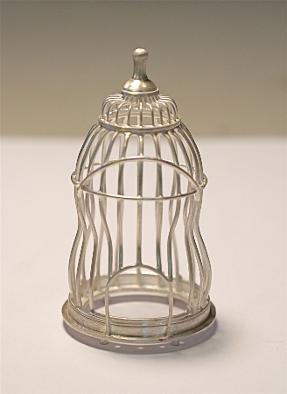
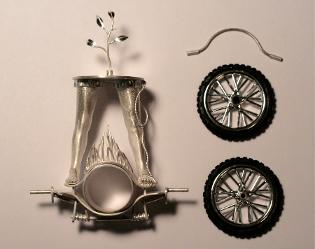
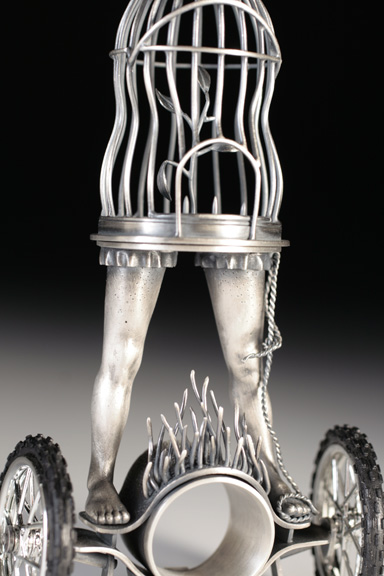
Training Wheels was designed to run over the table on the wearer's finger... learned to ride a motorcycle that year.
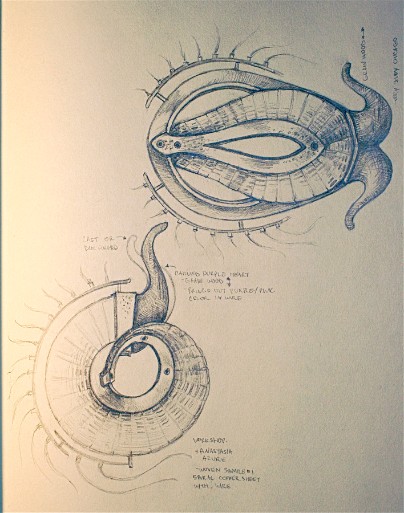
Above: Initial sketch of Venus and Mars was created after a workshop on weaving techniques with Anastasia Azure
- Use brown wax and spray paint to see the visual weight of parts
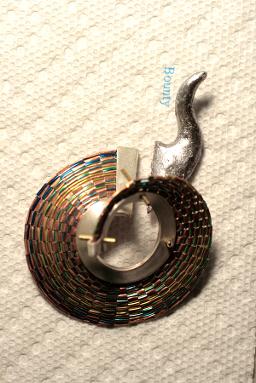
The shape was cut out with a jewelers saw, then carved using a flex shaft and wax burs. I prefer burs with more blades that remove less material for better control. Use wax files and sandpaper to smooth areas.
- Use panty hose to polish the purple wax.
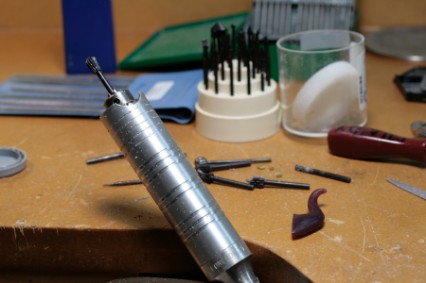
Below: Antique print used as visual reference
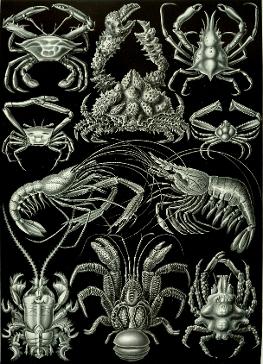
Mars was designed as the male counterpart to the Venus brooch. Both pieces were created using coated wire and 28g copper sheet. As the wire could not be heated without removing the color, cold connections or tube rivets attach the woven section to the silver structure. A spiral pin back finishes the reverse side.
Left: Initial drawing for Laparoscopy II
Below: Antique surgical instruments
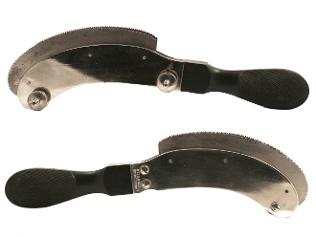
Below: Drawing with blue prints and patterns
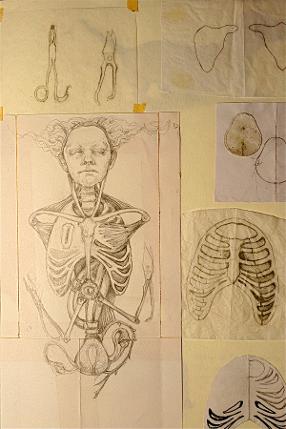
The arms of the brooch swing in a circular motion and are supported with steel springs. The uterus and ovaries are fabricated with sheet, wire, and fused fine silver.
The ribcage was chased in pitch and then pierced. The face was created using oil-based clay and cast in plastic using a silicon mold, then sandblasted.
- Use fine silver for small chased pieces.
- Some oil-based clays contain sulfur and should be sealed with a varnish before creating a flexible mold.
- Push water-based clay into silicone molds and extract the form after the clay has firmed up. A hair dryer can speed the process.